Truly Amazing Kids
By Lisa Ling

Photo credit: AP/World Wide Photo
The Mermaid Girl
About 200 miles from the capital city of Lima, Peru, you'll find the remote town of Huancayo. In this town, most people live a very simple life.
Ricardo and Sara, a young couple, fell in love, got married and planned to start a family. When Sara got pregnant, they had planned to give birth to the baby in their home. However, when Sara went into labor she was in too much pain, so they rushed to a hospital. There, after a very difficult labor, the unthinkable happened: Sara and Ricardo's baby was born with sirenomelia, also known as "mermaid syndrome." This is a strange genetic disorder where the legs of an infant are fused together like a fish's tail.
In Huancayo, there is actually a legend that explained this condition! It says that if a pregnant woman lies down close to a nearby lake, the spirit of a mermaid will enter her body and give her unborn child some of her characteristics.
After her baby was born, doctors prevented Sara from seeing her. Later, when Ricardo first saw the new child, he says he was upset. He says he asked himself, "Why has God sent me this? What sin did I commit? What have I done wrong for my baby to come out like this?"
Immediately the baby was transferred to a hospital with an intensive care unit. Her abnormalities' severity soon became clear: not only were her legs fused together, she had no external genitals. Ricardo and Sara refused to give up hope for their daughter, who they named Milagros, which means "miracles" in Spanish.
Ricardo and Sara, a young couple, fell in love, got married and planned to start a family. When Sara got pregnant, they had planned to give birth to the baby in their home. However, when Sara went into labor she was in too much pain, so they rushed to a hospital. There, after a very difficult labor, the unthinkable happened: Sara and Ricardo's baby was born with sirenomelia, also known as "mermaid syndrome." This is a strange genetic disorder where the legs of an infant are fused together like a fish's tail.
In Huancayo, there is actually a legend that explained this condition! It says that if a pregnant woman lies down close to a nearby lake, the spirit of a mermaid will enter her body and give her unborn child some of her characteristics.
After her baby was born, doctors prevented Sara from seeing her. Later, when Ricardo first saw the new child, he says he was upset. He says he asked himself, "Why has God sent me this? What sin did I commit? What have I done wrong for my baby to come out like this?"
Immediately the baby was transferred to a hospital with an intensive care unit. Her abnormalities' severity soon became clear: not only were her legs fused together, she had no external genitals. Ricardo and Sara refused to give up hope for their daughter, who they named Milagros, which means "miracles" in Spanish.
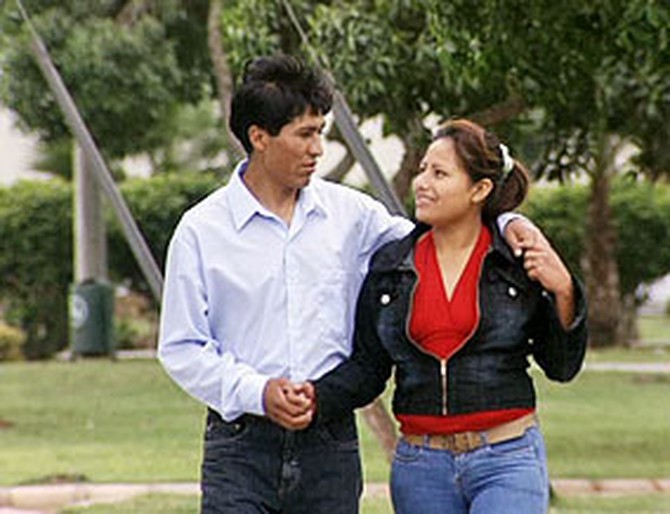
Sara and Ricardo were desperate. They had no money and nobody to turn to for help. They knew that with every minute that passed, their daughter's life was slipping away.
As the word of this unusual baby spread and with his two-day-old daughter barely clinging to life, Ricardo made a desperate plea on the national news for medical help. Dr. Luis Rubio from Lima was watching, and he immediately sent an ambulance and paramedics to transfer Milagros to his hospital. "I knew that a child born with this condition stood little chance of surviving without immediate intervention," Dr. Rubio says.
Sara and Ricardo moved into the hospital in Lima six hours from their home to stand by their baby. Surgeons planned an extremely risky operation to separate the baby's legs. First though, they had to perform a tricky procedure to expand her skin so that when her legs were separated there would be enough skin to wrap around each leg.
As the word of this unusual baby spread and with his two-day-old daughter barely clinging to life, Ricardo made a desperate plea on the national news for medical help. Dr. Luis Rubio from Lima was watching, and he immediately sent an ambulance and paramedics to transfer Milagros to his hospital. "I knew that a child born with this condition stood little chance of surviving without immediate intervention," Dr. Rubio says.
Sara and Ricardo moved into the hospital in Lima six hours from their home to stand by their baby. Surgeons planned an extremely risky operation to separate the baby's legs. First though, they had to perform a tricky procedure to expand her skin so that when her legs were separated there would be enough skin to wrap around each leg.

The first step was to implant silicone bags between her legs so that they could gradually be enlarged and expand the skin. The delicate surgery seemed to go off without a hitch, but later something went wrong. Milagros's body rejected one of the implants. She developed an infection and her condition deteriorated. After days in intensive care, doctors were able to stabilize her but the complications left Milagros very weak. Doctors worried she wouldn't be strong enough for the leg separation surgery.
The surgery was initially planned for when Milagros was around four months old. Almost a year later Ricardo and Sara were still waiting.
The surgery was initially planned for when Milagros was around four months old. Almost a year later Ricardo and Sara were still waiting.
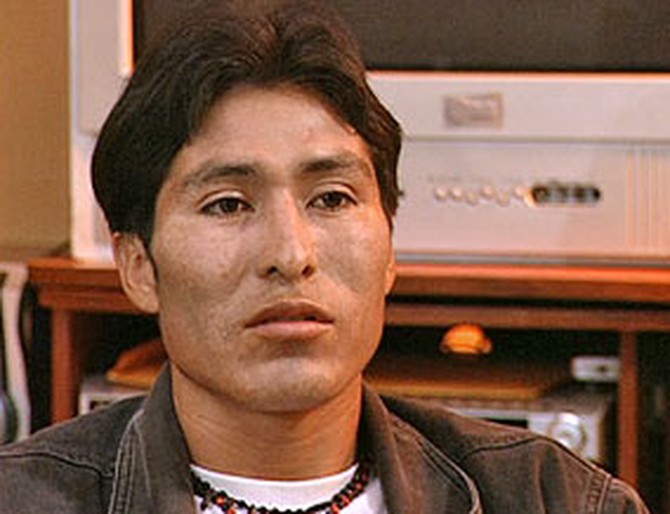
After spending her first birthday in the hospital, Ricardo, Sara and Milagros were ready for the momentous leg separation surgery. The surgical team agreed that Milagros's ability to survive without the procedure was growing slim.
Over the year, Milagros had become a symbol of hope to an entire nation. Finally, the doctors were assembled and her operation was televised live throughout Peru!
After the first hour, Dr. Rubio gave an update on the most dangerous part of the surgery: cutting a main artery that crosses from one leg to the other. "We have succeeded in clamping the main artery without any problems. We have sealed it and the blood flow is perfect in both legs.
Now it was time to separate the legs beginning at the heels. After more than six hours in surgery and a crucial 36 hours afterward, Milagros was in the clear. The surgery was a complete success!
Over the year, Milagros had become a symbol of hope to an entire nation. Finally, the doctors were assembled and her operation was televised live throughout Peru!
After the first hour, Dr. Rubio gave an update on the most dangerous part of the surgery: cutting a main artery that crosses from one leg to the other. "We have succeeded in clamping the main artery without any problems. We have sealed it and the blood flow is perfect in both legs.
Now it was time to separate the legs beginning at the heels. After more than six hours in surgery and a crucial 36 hours afterward, Milagros was in the clear. The surgery was a complete success!

Oprah: Do you feel like this is a miracle that happened to your baby?
Ricardo: For me, it has been very hard. It has been very heartbreaking. But also it has been good for me. I'm very happy. I'm thrilled.
Oprah: At first, did you think it was a curse?
Ricardo: Well, not really. I think that's what God sent us, was to fight for life.
Oprah: Were you amazed that the surgery ended up on national television, this surgery, and that the entire country was filled with hope for your baby?
Ricardo: Sí. Yes.
Ricardo: For me, it has been very hard. It has been very heartbreaking. But also it has been good for me. I'm very happy. I'm thrilled.
Oprah: At first, did you think it was a curse?
Ricardo: Well, not really. I think that's what God sent us, was to fight for life.
Oprah: Were you amazed that the surgery ended up on national television, this surgery, and that the entire country was filled with hope for your baby?
Ricardo: Sí. Yes.

The medical team responsible for the miraculous separation of Milagros's mermaid syndrome legs is here: Dr. Rubio, Dr. Adrianzen and Dr. Pinto.
Dr. Rubio says he believes that Milagros could someday walk. "I dream about that," he says. "I dream for that."
Before going in to the surgery, which was broadcast around Peru, Dr. Rubio says he was extremely nervous. "I think that 10 minutes before the surgery was the toughest time in my whole life," he says. "I was very, very nervous. And 10 minutes before the surgery, [Milagros] held my hand while I was walking her through to the operating room."
Dr. Rubio says he believes that Milagros could someday walk. "I dream about that," he says. "I dream for that."
Before going in to the surgery, which was broadcast around Peru, Dr. Rubio says he was extremely nervous. "I think that 10 minutes before the surgery was the toughest time in my whole life," he says. "I was very, very nervous. And 10 minutes before the surgery, [Milagros] held my hand while I was walking her through to the operating room."
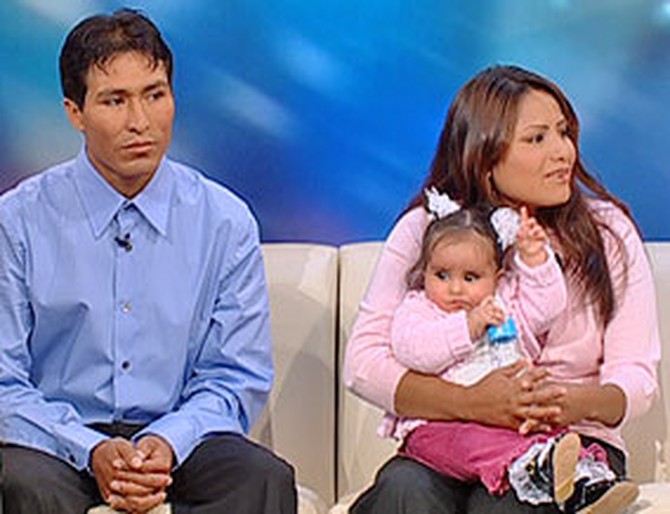
According to Dr. Rubio, the entire experience with Milagros felt like a miracle. "There's a message of something higher than us and bigger than us," he says.
Ricardo has a message for the team of doctors who saved his daughter's life. "I'm very grateful for everything you did for my daughter," he says. "And I also will want to ask you for help so in the future she can walk."
Ricardo has a message for the team of doctors who saved his daughter's life. "I'm very grateful for everything you did for my daughter," he says. "And I also will want to ask you for help so in the future she can walk."
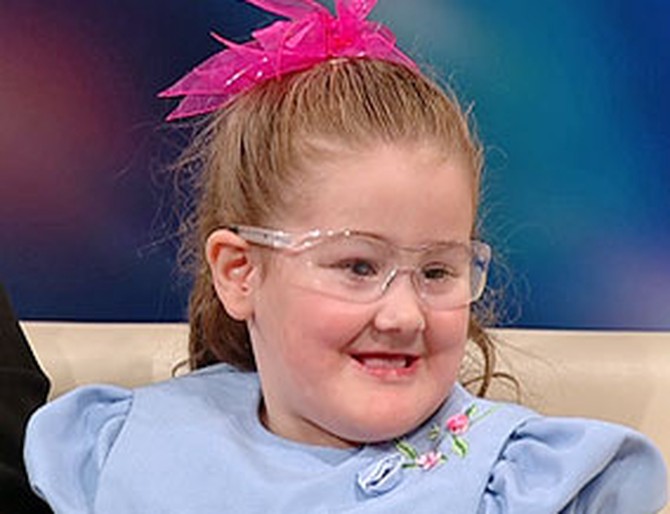
The Girl Who Feels No Pain
Gabby, at just 5 years old, is one of the most unique little girls around. In fact, only 34 other Americans live with the same condition—a congenital insensitivity to pain—as her. Like a derailed train, the nerves that carry pain signals from the surface of her body to her brain never arrive. Gabby never feels pain.
"When we first found out she doesn't feel pain it was like, 'What a relief,'" her dad, Steven, says.
However, that pain is necessary, Gabby's mom, Trish, says. "People always think of pain. 'Oh, if I could get rid of the pain.' I'm thinking, 'You do not even know how lucky you are that you can feel it."
When she was just a baby, Gabby started chewing her own hand while she was teething. "She had bit down through her skin," Trish says. "She would have bit down to the bone had I let her. It was just chewed up. It looked mangled and nasty, like raw hamburger on her hand." It got to the point where Steven and Trish decided to have Gabby's teeth pulled out to save her hands and tongue, which she chewed on "like bubblegum."
After literally poking her own eye out, Gabby now wears protective goggles to try and spare the sight in her one remaining eye. "Now the main thing is keeping her good eye healthy," Trish says. "Making sure that we don't ever get an infection or do anything to hurt the one eye she's down to."
In another instance Gabby suffered second-degree burns on her hand after grabbing a hot lightbulb. "She just grabbed a hold of the lightbulb like she was grabbing a baseball," Steven says. "On a normal person, that would be very painful."
"When we first found out she doesn't feel pain it was like, 'What a relief,'" her dad, Steven, says.
However, that pain is necessary, Gabby's mom, Trish, says. "People always think of pain. 'Oh, if I could get rid of the pain.' I'm thinking, 'You do not even know how lucky you are that you can feel it."
When she was just a baby, Gabby started chewing her own hand while she was teething. "She had bit down through her skin," Trish says. "She would have bit down to the bone had I let her. It was just chewed up. It looked mangled and nasty, like raw hamburger on her hand." It got to the point where Steven and Trish decided to have Gabby's teeth pulled out to save her hands and tongue, which she chewed on "like bubblegum."
After literally poking her own eye out, Gabby now wears protective goggles to try and spare the sight in her one remaining eye. "Now the main thing is keeping her good eye healthy," Trish says. "Making sure that we don't ever get an infection or do anything to hurt the one eye she's down to."
In another instance Gabby suffered second-degree burns on her hand after grabbing a hot lightbulb. "She just grabbed a hold of the lightbulb like she was grabbing a baseball," Steven says. "On a normal person, that would be very painful."

Gabby's parents say they knew something was different about her from the start, when she was still in the hospital. "They do the K test the very next day where they poke the heel and she slept right through it," Steven says. "The nurse said, 'Wow, what a good baby. She's still sleeping.' Well, she didn't feel any pain."
"We've met families that have lost their kids," Trish says. "So at the same time, so what if our kid is blind? So what if she ends up in a wheelchair? We've got her. We can hold her. We can love her."
In fact broken bones and joints are the greatest dangers Gabby faces through her life. However, there is at least one upside. Steven and Trish have contacted a woman in her 30s with Gabby's condition. "She has severe back and neck problems," Trish says. "But the good news is childbirth was very easy."
"We've met families that have lost their kids," Trish says. "So at the same time, so what if our kid is blind? So what if she ends up in a wheelchair? We've got her. We can hold her. We can love her."
In fact broken bones and joints are the greatest dangers Gabby faces through her life. However, there is at least one upside. Steven and Trish have contacted a woman in her 30s with Gabby's condition. "She has severe back and neck problems," Trish says. "But the good news is childbirth was very easy."

Lisa Ling reports that when Hurricane Katrina struck in August 2005, about 200 kids with cancer were totally displaced right in the middle of treatment. To aid in this crisis, St. Jude Children's Research Hospital in Memphis opened their doors to about 100 of them, and these children are being treated and their families are being taken care of for free.
St. Jude Children's Research Hospital—founded by actor Danny Thomas in 1962—has been treating children with cancer and other catastrophic diseases for over 40 years.
Among the children that Lisa met at St. Jude were Mason—the youngest patient taken in after Katrina—and Ronnie and Brianna, who were both undergoing chemotherapy at the time the storm struck.
St. Jude Children's Research Hospital—founded by actor Danny Thomas in 1962—has been treating children with cancer and other catastrophic diseases for over 40 years.
Among the children that Lisa met at St. Jude were Mason—the youngest patient taken in after Katrina—and Ronnie and Brianna, who were both undergoing chemotherapy at the time the storm struck.
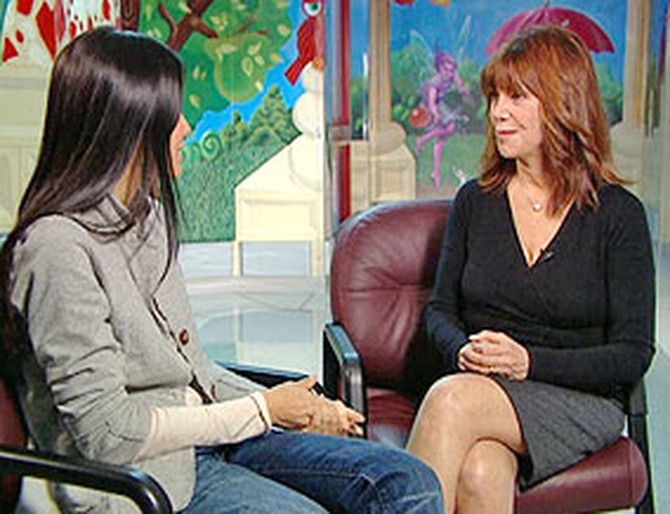
Since Danny Thomas—star of the classic TV show Make Room for Daddy and founder of St. Jude Hospital—passed away, his daughter, Marlo Thomas, has continued her father's legacy.
Though Hurricane Katrina has made many of the newest patients at St. Jude homeless, Marlo says there was no question about what needed to be done. "With what happened in Louisiana, it became apparent that we were the ones to take care of these children," she told Lisa. "There was no place else that could rescue them and that could give them the critical care that they needed and also take care of them and their families."
Though these children arrived with no records of their serious conditions, the doctors at St. Jude began treatment immediately. "It was a tremendous amount of pressure," Marlo told Lisa. "But there is pressure here every day. I mean, you're dealing with a life and death situation every day."
Though Hurricane Katrina has made many of the newest patients at St. Jude homeless, Marlo says there was no question about what needed to be done. "With what happened in Louisiana, it became apparent that we were the ones to take care of these children," she told Lisa. "There was no place else that could rescue them and that could give them the critical care that they needed and also take care of them and their families."
Though these children arrived with no records of their serious conditions, the doctors at St. Jude began treatment immediately. "It was a tremendous amount of pressure," Marlo told Lisa. "But there is pressure here every day. I mean, you're dealing with a life and death situation every day."
Published 11/08/2005

